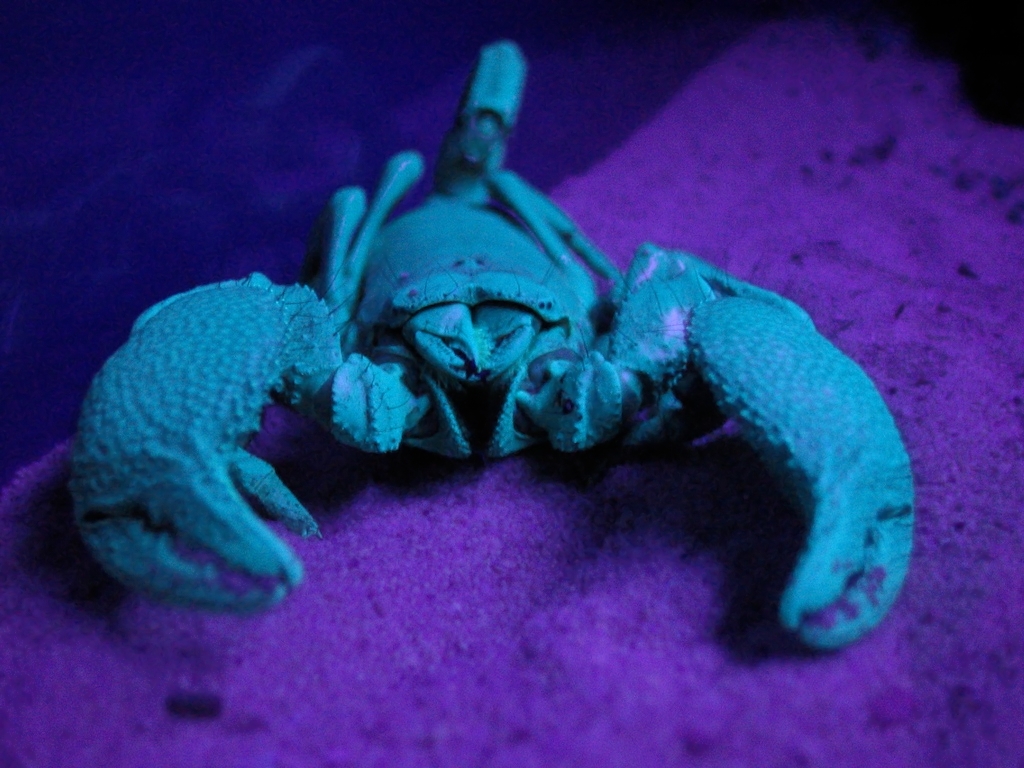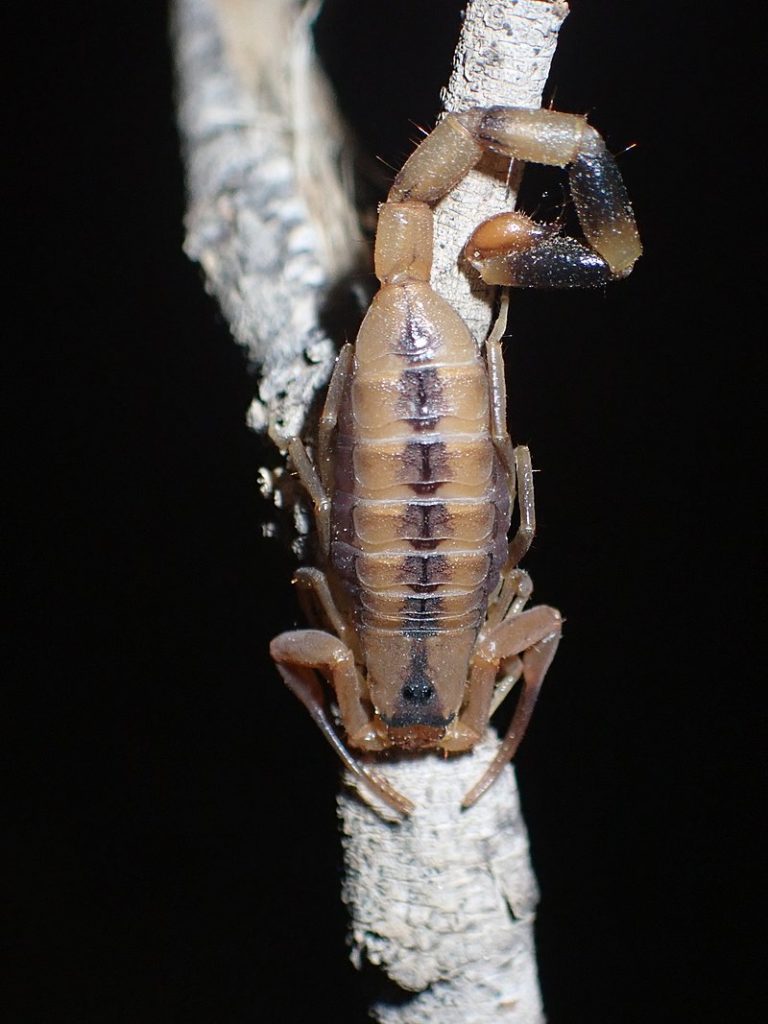
You have had a long, hard night in your African-tented camp with your PH drinking Jack Daniels and gorging on Impala steaks. In the chilly pre-dawn, you wake up in your tent and begin to put on your boots for the day’s hunt.
A searing pain shoots up your leg and you cry out in agony. You have made one of the most common mistakes of visiting hunters.
Scorpions are active at night and are extremely numerous in the African bush.
They can be easily seen at night using a black light (remember Saturday Night Fever when you still frequented the discos?) The glow is due to the presence of fluorescent chemicals in the cuticle. The principal fluorescent component is now known to be beta-Carboline.
A hand-held UV lamp has long been a standard tool for nocturnal field surveys of these animals. However, a glow will only be produced in adult specimens as the substances in the skin required to produce the glow are not found in adolescents.
How to prevent being stung
- Wear protective footwear – especially at night.
- Be careful when lifting rocks and logs
- Watch out when collecting firewood
- Do not handle scorpions with bare hands
- When camping try not to sleep directly on the ground
- Shake out footwear, clothing, and bedding to evict nasties
- Learn how to distinguish a highly venomous scorpion from a harmless one
- Remember: Some scorpions can squirt venom into the eyes of attackers from about 1 meter away
Scorpion Families
1. Scorpionidae
A relatively harmless species with large pincers and a slender tail. It is mildly toxic and produces stinging pain in a mild local reaction which may persist for 15-20 minutes. No antivenom or treatment is required. Up to 100mm long, it varies in colour from olive to yellow, brown, or almost black.
2. Buthidae
Potentially lethal envenomations are possible by species of the buthid genera. They have thick tails and slender pinchers. Venom is injected by stinging or squirting venom at the eyes of the perceived threat.
Scorpions are common throughout southern Africa. Parabuthus is found throughout the region except on the highveld and eastern seaboard.

The venom is a potentially lethal neurotoxin that causes an extremely painful local reaction within one. Use ice packs and tight crepe bandages to immobolise the whole limb.
Treat with specific anti-venom. Do not use morphine and derivatives. Buthotus is restricted to sandy hot and arid areas in the north of the region.
Uroplectes
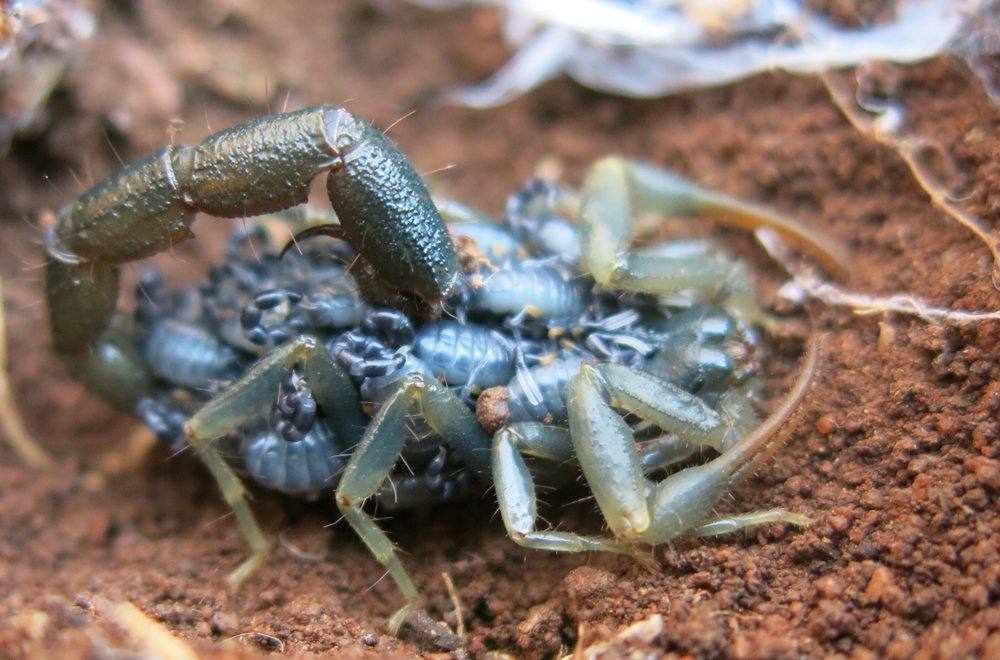
Length of 20 -50mm. Bright green, orange, or orange-green with black markings. No stridulatory patches or abdominal keels. Fast moving.
Uroplectus Venom
Very painful local reaction that may spread. The effects of venom last at least 3 hours. Use ice packs. No anti-venom is required. Do not use morphine and derivatives
Butotus
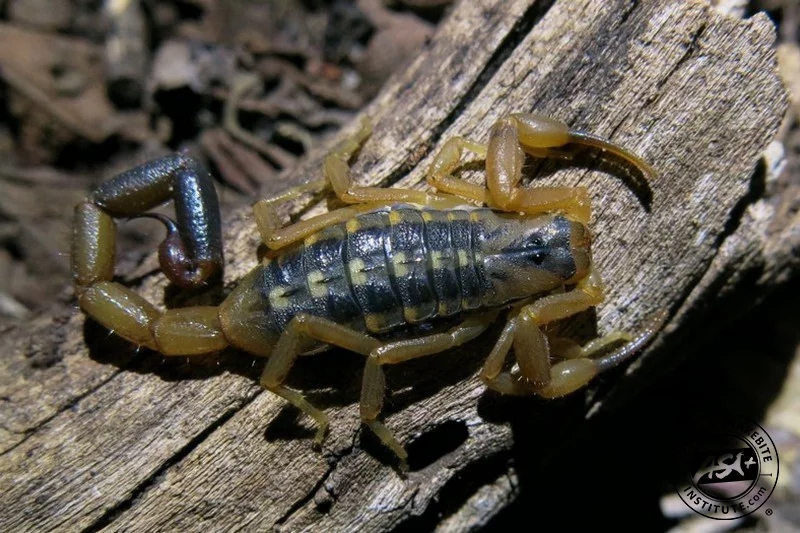
30 -70mm. Medium-sized yellow scorpions with pincers, thick tails, characteristic black keels on the carapace just behind the head, and three black keels down the length of the abdomen.
Venom
Use ice packs and tight crepe bandages to immobilize the whole limb. Treat with specific anti-venom. Never use morphine and derivatives for pain.
Parabutus
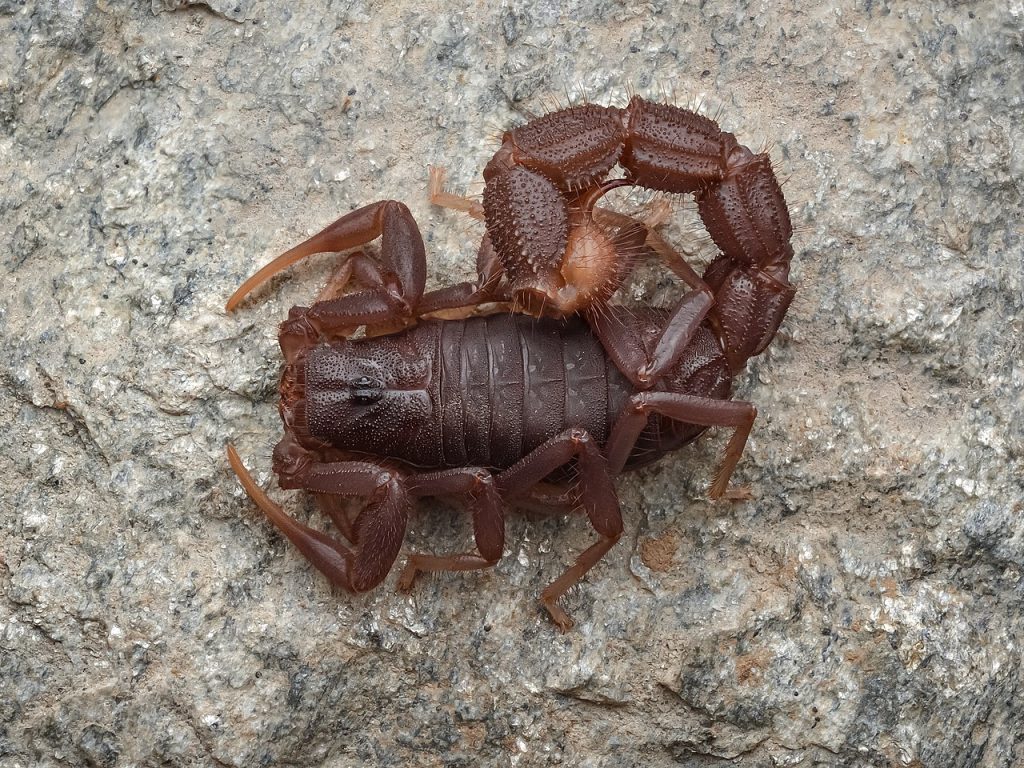
60 -150mm.Large yellow, brown, or black scorpions with slender pincers, thick tails, and stridulatory areas on the first and second tail segments
Venom
Use ice packs and tight crepe bandages to immobilize the whole limb. Treat with specific anti-venom. Never use morphine and derivatives for pain.
General
Many victims of scorpion stings see the scorpion that has stung them and its crushed remains often accompany them to hospital after the victim’s vengeance has been had. Unless there are obvious systemic signs, antivenom therapy is contraindicated.
An ice pack should be applied to relieve the pain and retard the onset of systemic signs. Immobilization of the limb involved with tight crepe bandages and splints to impede the spread of venom via the lymphatic system is advised.
Under no circumstances should morphine or any of its derivatives be administered to reduce pain as these compounds act synergistically with the venom and greatly increase the chances of death.
The specific anti-venom should be used to treat patients with systemic signs.
Symptoms
The severity of envenomation depends on various factors such as the health and age of the victim, the sting site and species, size and degree of agitation of the scorpion.
Persons with heart or respiratory problems will be at greater risk.
Some or all of the following sings and symptoms may result.
- Immediate and intense, burning pain at the sting site that lasts about 30 minutes.
- Mild inflammation may be present, with the sting mark not always visible.
- Signs and symptoms only develop after 30 minutes and sometimes only after 4 to 12 hours, increasing in severity over the following 24 hours. The pain can be local as well as far removed from the sting site with abdominal cramps.
- Abnormal sensitivity, including a burning sensation and pins and needles usually in the hands, feet, face, and scalp.
- Excessive sensitivity of the skin to clothing and bedding with the patient even increased sensitivity to noise.
- Lack of muscle coordination with a stiff-legged or drunken walking action.
- Involuntary movements, tremors, and muscle weakness.
- Increased pulse rate of 100 to 150 bpm for Parabuthus granulatus and below 55 bpm for Parabuthus transvaalicus.
- Raised blood pressure in Parabuthus granulatus. Normal in children but raised in some adults in Parabuthus transvaalicus cases.
- Difficulty in swallowing especially with Parabuthus transvaalicus.
- Excessive salivation.
- Difficulty speaking.
- Excessive perspiration in Parabuthus transvaalicus cases.
- Headaches, nausea, vomiting and diarrhea.
- Droopy eyelids.
- Restlessness and anxiety are prominent features seen in children with Parabuthus granulatus. Hyperactivity and infants crying for unexplained reasons.
Restlessness, particularly in children, should be a warning of potentially life-threatening complications. - Urine retention.
- Respiratory distress is a major complication and can result in death.
Treatment
Patients with systemic signs and symptoms should be kept under observation for 48 hours before discharge.
All other scorpion stings result in painful local signs which can be relieved utilizing an icepack applied as soon as possible after envenomation.
The severity of scorpion stings is affected by the amount of venom injected which varies from one sting to the next, the size of the specimen, the species involved, and the body mass of the patient.
Envenomations are characterized by intense burning pain at the site of the sting after which systemic signs and symptoms develop which may be as follows: barely perceptible edema and erythema at the sting bite, sweating, drooling, restlessness, confusion, nausea or vomiting, abdominal or chest pains, muscular twitching, numbness, convulsions, and impaired breathing.
Dos:
- First aid treatment is the application of a cold compress if the hyperaesthesia will allow and an analgesic (Asprin, Paracetamol) to relieve pain and transport to a hospital.
- Monitor cardiac and respiratory functions and treat as required.
- Patients with systemic symptoms, especially children and the elderly must be hospitalized for 24 to 48 hours.
- Immobilize and clean wound.
- Antivenom must only be administered in the case of severe systemic envenomation
Antihistamine and steroids are only to be administered in cases of allergic reaction to anti-venom. In the event of hypersensitivity to the ingestion or injection of a substance, which must always be anticipated, administer adrenaline. - Atropine may be administered in cases of confirmed Parabuthus transvaalicus envenomation to control excessive secretions.
- Intravenous administration of 10 ml of 10% calcium gluconate IV over 10 to 20 minutes may provide relief from pain and cramps, but is only effective for 20 to 30 minutes.
- Administer a tetanus toxoid to prevent infection.
- Envenomation of the eyes must be flushed with water or any bland fluid (milk, urine). In severe cases, anti-venom can be diluted 1 to 5 or 1 to 10 with water.
Do not:
- Do not use traditional remedies such as incisions, suction, tourniquets, or the application of ointments.
- Do not use alcohol as it will only mask any symptoms.
- Do not administer anti-venom if no signs or symptoms of severe envenomation present themselves.
- Do not administer spider or snake anti-venom.
- Do not administer atropine to reduce salivation in the case of Parabuthus granulatus stings as it may lead to unopposed adrenergic reaction.
- Do not administer barbiturates, opiates, morphine, or morphine derivatives as this could greatly increase convulsions and cause respiratory distress.
Anti-venom is produced by the South African Institute for Medical Research (SAIMR) in Johannesburg [011] 489 9000.

